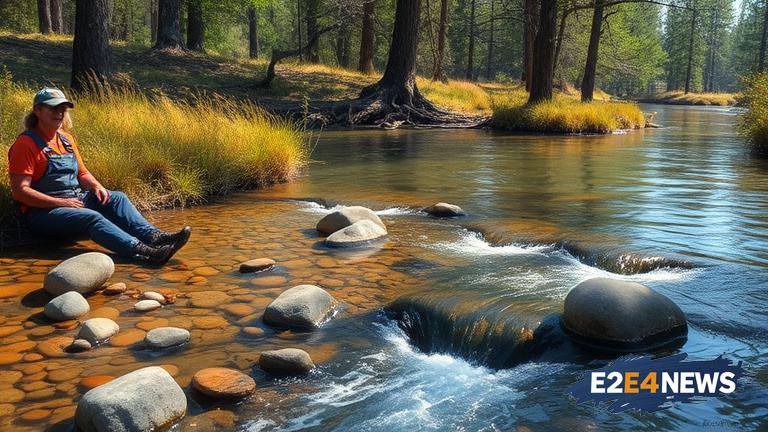The Big Chico Creek, a vital waterway in Northern California, has been facing significant environmental challenges due to the presence of concrete weirs. These barriers have been hindering the migration of salmon and other aquatic species, leading to a decline in the creek’s ecosystem. In response to this issue, a restoration project has been planned to remove the concrete weirs and restore the creek’s natural flow. The project aims to revitalize the ecosystem, promote biodiversity, and ensure the long-term sustainability of the creek. The removal of the weirs will allow salmon and other fish species to migrate freely, enabling them to reach their spawning grounds and complete their life cycle. This, in turn, will help to maintain a healthy population of salmon and other aquatic species in the creek. The restoration project will also involve the creation of a more natural and meandering creek channel, which will help to reduce erosion and improve water quality. Additionally, the project will include the planting of native vegetation and the creation of habitat for other aquatic species. The restoration of Big Chico Creek is a complex and multifaceted project that requires careful planning and execution. The project team will need to work closely with local stakeholders, including landowners, fishermen, and environmental groups, to ensure that the project is successful and sustainable. The project will also require significant funding, which will be provided by a combination of government agencies, private organizations, and community groups. The restoration of Big Chico Creek is not only important for the environment, but also for the local community. The creek is a popular spot for recreation, including fishing, hiking, and birdwatching, and the restoration project will help to improve the overall quality of the creek and its surroundings. Furthermore, the project will also provide economic benefits to the local community, including the creation of jobs and the stimulation of local businesses. The removal of the concrete weirs will also help to reduce the risk of flooding, which has been a significant problem in the area. The restoration project will be carried out in phases, with the first phase involving the removal of the weirs and the creation of a new creek channel. The second phase will involve the planting of native vegetation and the creation of habitat for other aquatic species. The project is expected to take several years to complete, but the end result will be a healthier, more sustainable ecosystem that will benefit both the environment and the local community. The restoration of Big Chico Creek is a significant step towards protecting and preserving the natural environment, and it is an important example of how community-led initiatives can make a positive impact on the environment. The project also highlights the importance of collaboration and partnership in achieving environmental goals. By working together, local stakeholders, government agencies, and private organizations can achieve significant positive change and create a more sustainable future for generations to come. The restoration of Big Chico Creek is a complex and challenging project, but it is also a vital and necessary step towards protecting the environment and promoting biodiversity. The project will require careful planning, significant funding, and a commitment to sustainability, but the end result will be a healthier, more resilient ecosystem that will benefit both the environment and the local community.





